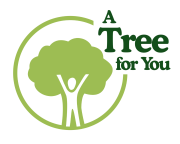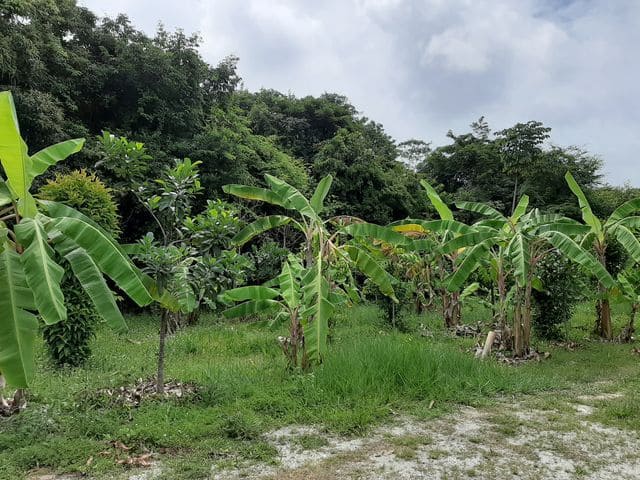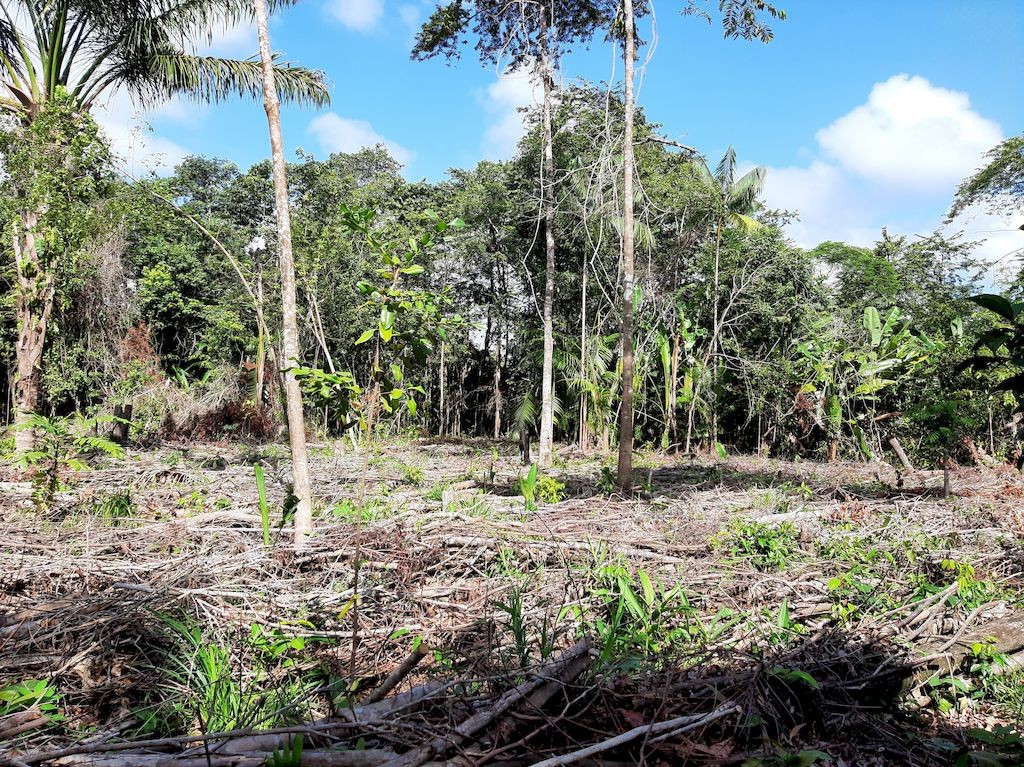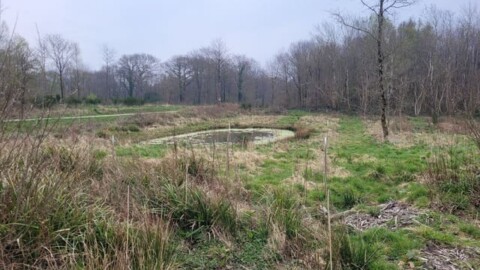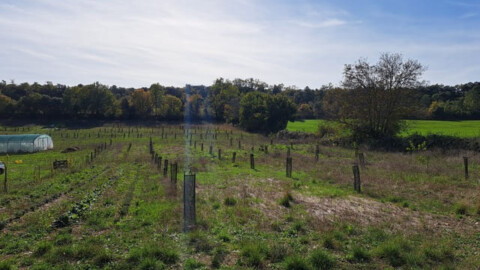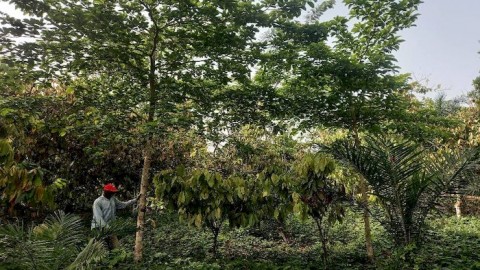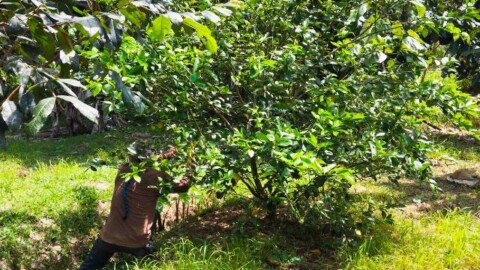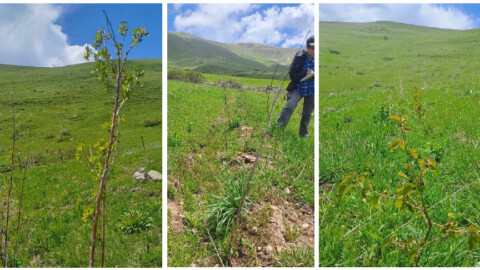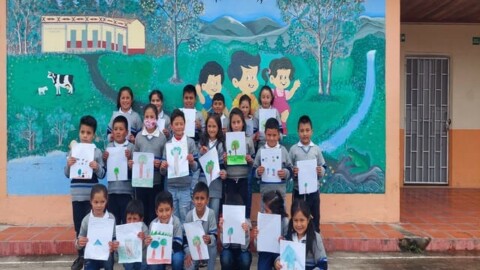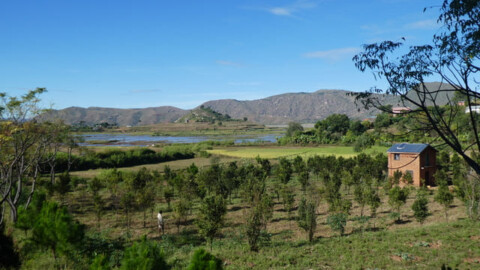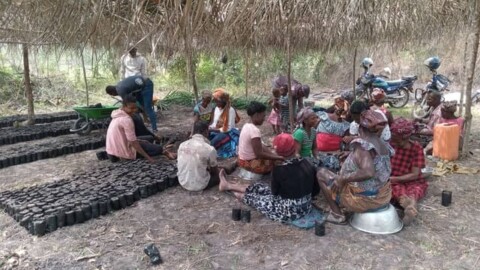French Guiana, October 2025 – by Joëlle Touré, General Delegate, A Tree for You
In June this year, we visited the AgroForestière planting plots in French Guyana to see how the mother tree planting project, funded by A Tree for You donors, was progressing. Jean-Louis, a hydro-ecologist and soil specialist from our scientific committee, accompanied me to lend his expert eye. Our visit marked the the close of monitoring for this project.
As a reminder, the aim of this project is to create an orchard of seeds from species endemic to French Guyana, which will ultimately help preserve and restore the threatened natural environment.
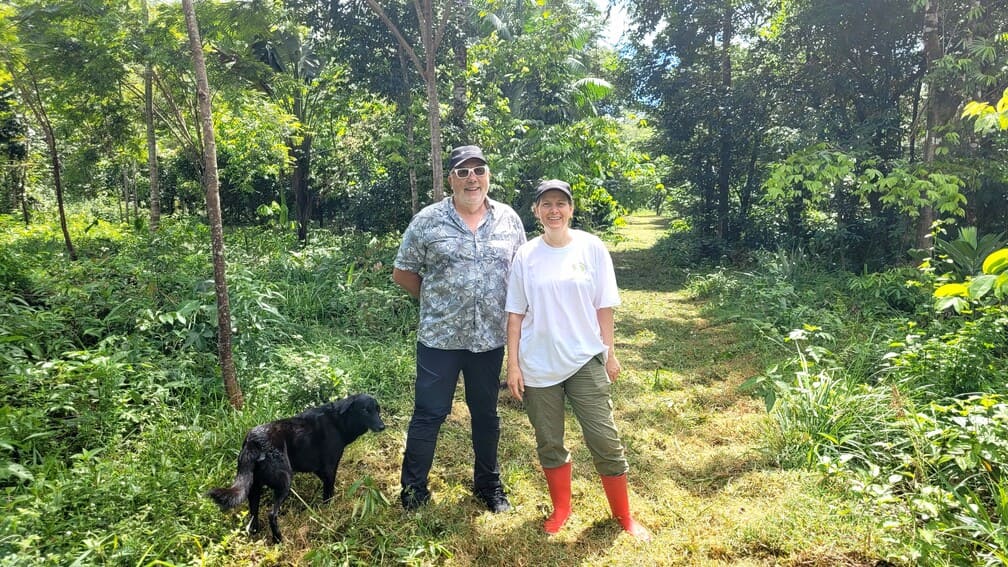
The trip was also an opportunity to see firsthand the challenges addressed by the planting project for French Guyana. We were able to visit Guyana’s Technical Centre for Wood and Forests (CTBF Guyane) with Léo Landry, one of the engineers working there. He explained to us the importance in Guyana of better promoting and raising awareness of local tree species.
The figures are impressive and speak for themselves: the Amazon rainforest covers 97% of this territory. According to estimates, it is home to around 4,000 tree species, but only 1,800 of them have been recorded, of which 500 have only been seen once or twice since the first botanical inventories!
And yet French Guyana still imports timber from mainland Europe and elsewhere to meet certain specific needs (glued laminated timber, particle board, OSB (Oriented Strand Board), melamine, etc). The construction sector is extremely dynamic in French Guyana due to high demographic pressure (+1.6% population growth per year). The territory needs to build new secondary schools – half of the 287,000 inhabitants are under 25 – as well as housing.
Of the 90 species of wood marketed by ONF Guyana (French Guyana’s National Forestry Office), only about ten had already undergone mechanical qualification testing in order to be used for structural purposes. Once tested, these wood species can then be included in European reference standards and benefit from CE marking, vital for insuring buildings. This small number of species suitable for construction has put huge pressure on a few species, including Angelica, Dicorynia guianensis, which accounts for over half the volume of wood removed from the forest.
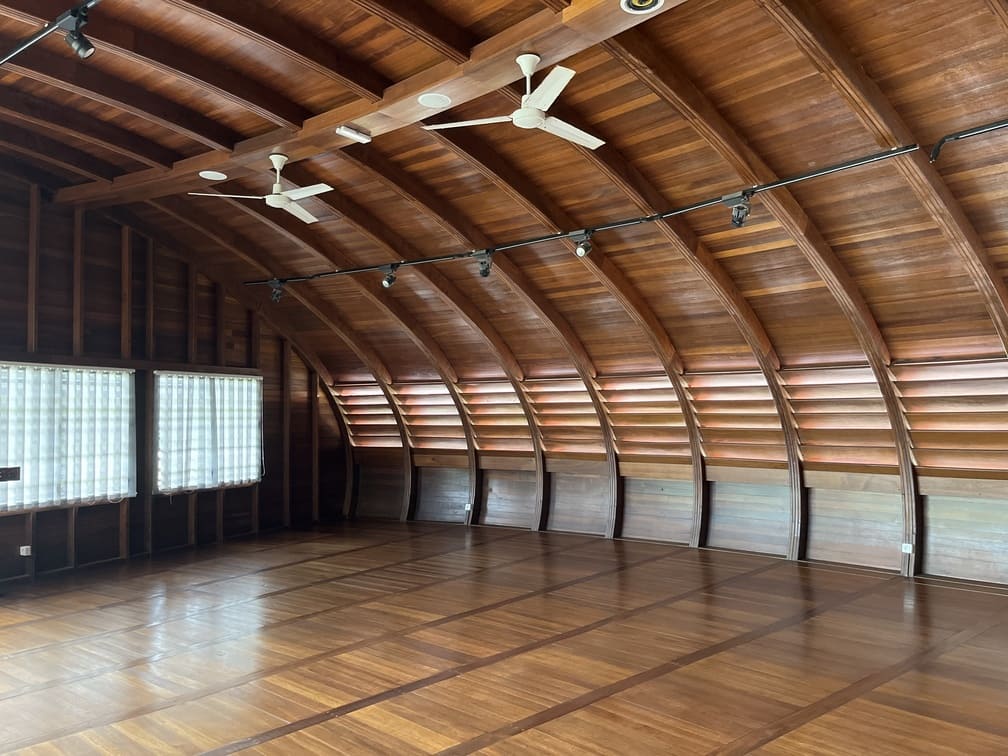
CTBF Guyane is running a major mechanical testing campaign so that 20 species of wood can be used for construction by the end of 2025. This new diversity will (and indeed already does) enable demand for structural timber to be spread across many more species. Note that local wood species are often better suited to the local climate than those imported, since plenty of them are naturally resistant to fungal or termite attacks.
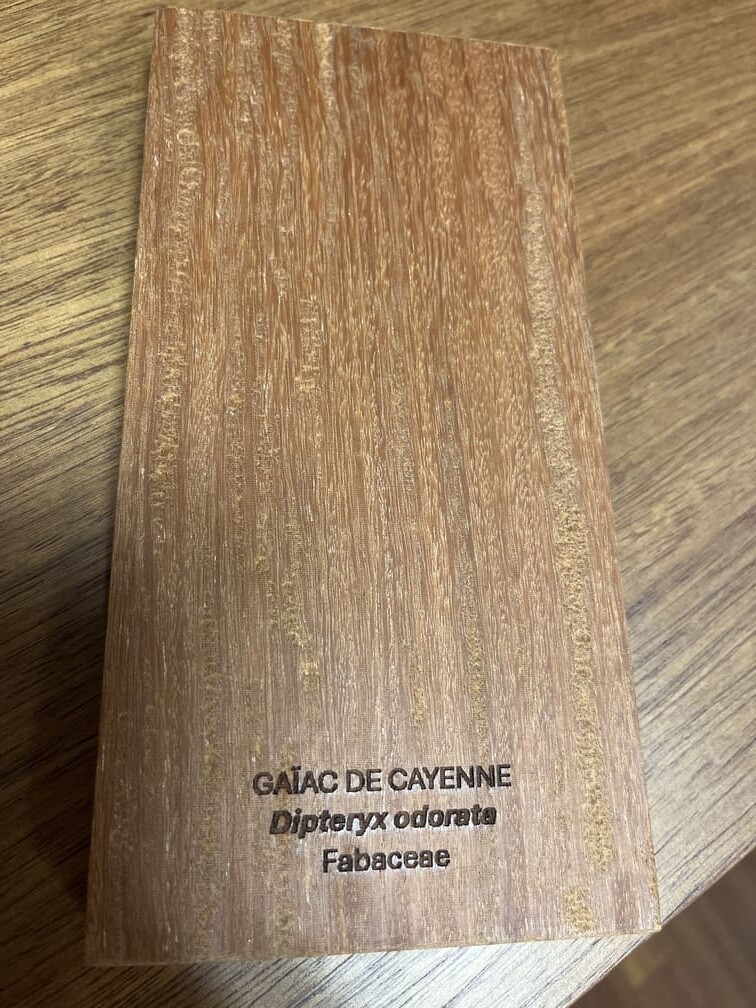
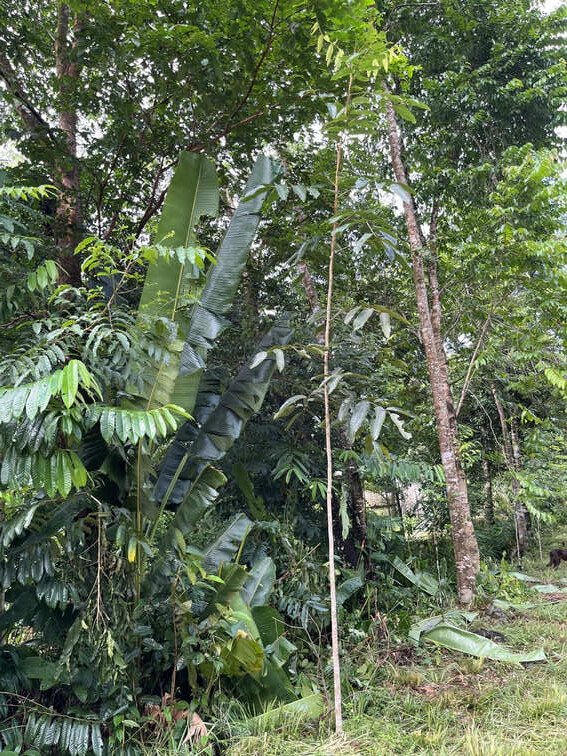
The DAAF (Directorate of Food, Agriculture and Forestry) Guyana Regional Forest and Timber Programme plans to plant 5,000 hectares of timber production plantations to improve development of Guyana’s coastline, gradually reduce pressure on the primary forest, create new jobs, and diversify supply sources of local and sustainable timber.
For local species to be known and used by the local population – mainly farmers, foresters, and developers – seeds must be available in the coastal area and the technical conditions for seed germination and tree growth mastered. The project led by AgroForestière also addresses these issues. AgroForestière works with local tree seeds, growing different varieties of several species to preserve genetic diversity.
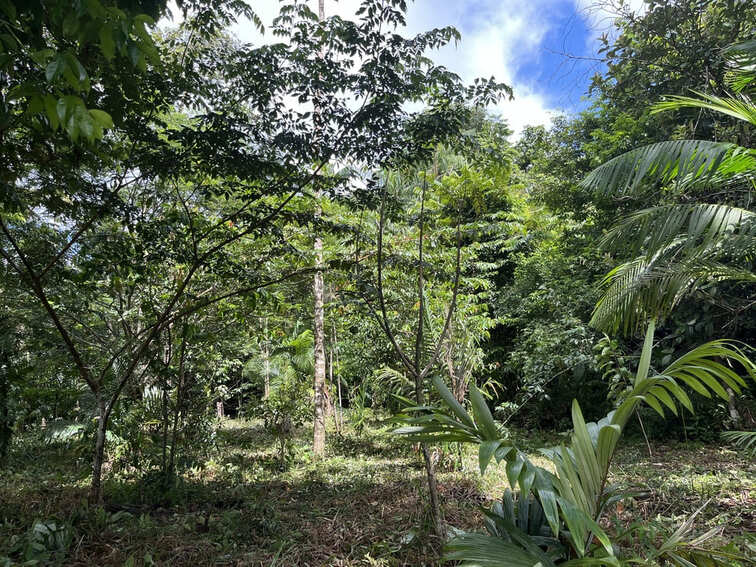
It is important to note that in French Guyana maintenance work is vital, since everything grows rapidly here. To allow nursery plants to grow, competing plants must be cut back often and on a regular basis. The trees for the project were planted in 2020 and 2021, with 650 trees recorded in April 2024. Before our visit in May 2025, the team carried out some replanting. There are currently 760 trees of 50 different species. So the initial target of 625 perennial trees has been exceeded!
The trees will produce viable seeds within 3 to 5 years. AgroForestière will then be able to begin a more substantial marketing phase. The plot on which the trees are planted has the advantage of being very accessible to Guyanese people, just a few kilometres from the main coastal road, but it is surrounded by homes and construction sites, and there is significant pressure on the land.
The local team has a very good level of technical expertise, both in species recognition and seed management (storage, dormancy breaking, etc.), as well as vegetative reproduction and maintenance techniques (pruning, etc.). This is a real strength for the activities carried out.
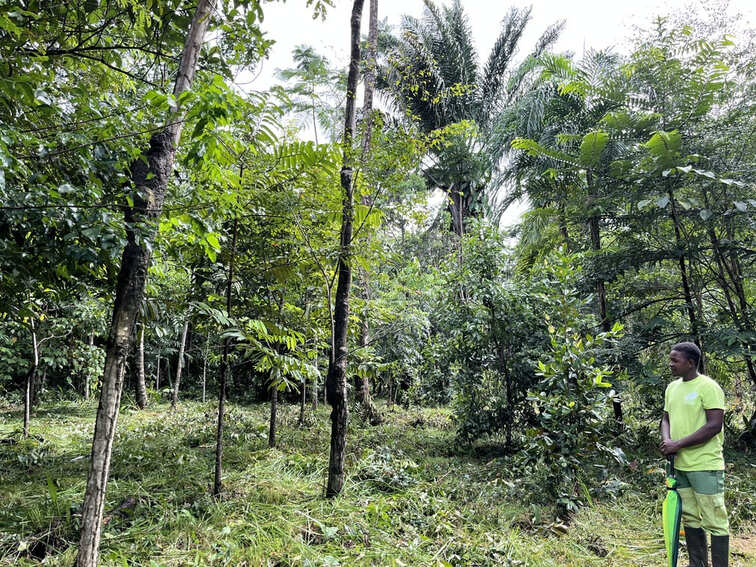
With regard to financial monitoring, a detailed table of expenses has been provided, showing the team’s significant investment in working days for tree planting, mulching, maintenance and technical monitoring of the project. A Tree for You donors have thus financed the production of seedlings, protective measures, maintenance and overall coordination of the project.
The project led by A Tree for You has enabled and will enable other projects to be financed through public funds. For example, AgroForestière can apply to the French Office for Biodiversity to finance a ‘seeds for the future’ project. The aim is to list mother trees as ‘local plant material’, which would enable the nursery to gain recognition for its admirable work.
Many thanks for your support for this ambitious and important project for the French Guyana region!
